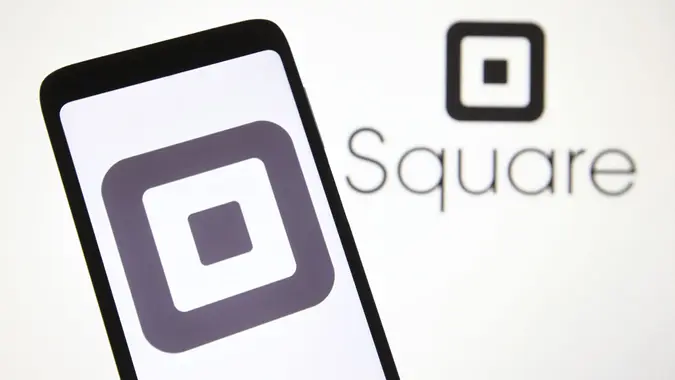Crypto Update: Jack Dorsey’s Square Publishes Whitepaper for Decentralized Bitcoin Exchange

Commitment to Our Readers
GOBankingRates' editorial team is committed to bringing you unbiased reviews and information. We use data-driven methodologies to evaluate financial products and services - our reviews and ratings are not influenced by advertisers. You can read more about our editorial guidelines and our products and services review methodology.

20 Years
Helping You Live Richer

Reviewed
by Experts

Trusted by
Millions of Readers
Digital payments firm Square’s TBD business published a whitepaper November 19, for its decentralized exchange for Bitcoin.
Find: 8 Best Cryptocurrencies To Invest In for 2021
Explore: Cryptocurrency Predictions for 2022
“We are at a crossroads in our financial system. The emergence of trustless, decentralized networks unlocks the potential for a future where commerce can happen without the permission, participation, or benefit of financial intermediaries,” according to the whitepaper.
Square and Twitter CEO Jack Dorsey announced the launch of TBD, “an open source, open development, and open roadmap business.”
Dorsey tweeted in August that they had determined TBD’s direction, and implored, “help us build an open platform to create a decentralized exchange for Bitcoin.”
We’ve determined @TDB54566975‘s direction: help us build an open platform to create a decentralized exchange for #Bitcoin https://t.co/jHYWHy1qmu
— jack (@jack) August 27, 2021
“Today, we make good on that promise by sharing the first draft of the tbDEX whitepaper with the world,” the company said in a post. “We’ve published it in Github so the community can contribute.”
The tbDEX protocol aims to create ubiquitous and accessible on-ramps and off-ramps that allow the average individual to benefit from crypto innovation, according to the whitepaper. It went on to explain that the current state of Bitcoin and other crypto technologies is still beyond the reach of everyday people, as gaining access to your first cryptocurrency generally involves going through a centralized exchange.
Related: Understanding the Metaverse and How it Relates to Cryptocurrency
“Accessing decentralized financial services then requires multiple asset transfers and transaction fees each step of the way. Aside from gatekeepers and cost, the complexity and sheer unintelligibility of this process today is a prohibitive barrier to entry for most. Important work is being done to overcome current drawbacks with layer two solutions, such as Lightning. But deficiencies remain. It is still prohibitively difficult for the average person, starting with traditional fiat-based payment instruments, to directly access on-ramps and off-ramps into and out of the decentralized financial system,” according to the whitepaper.
“We believe that the economy should be inclusive. We need to build on-ramps to this future where everyone can access and participate in the economy,” the whitepaper added.
In order to achieve this, the nature of financial institutions needs to evolve, and to unleash the potential of bitcoin and decentralized financial infrastructure, when most of us still live in a world of fiat, “we need to build bridges between the fiat and cryptocurrency worlds.”
The whitepaper noted, however, that there are serious challenges to realizing this vision: fiat rails are regulated, and no interface with either the traditional monetary system or “real world” can be completely trustless. The solution Square’s TBD offers is one that does not rely on a federation to control permission or access to the network; nor does it dictate the level of trust required between counterparties.
“There is no governance token. Instead, the tbDEX protocol allows participants to negotiate trust directly with each other — or mutually and voluntarily rely on trusted third-parties to vouch for the counterparty. Transaction costs are ultimately driven by risk. At maximum anonymity, transaction costs will necessarily be higher; at maximum disclosure, they should be lower. This approach to price discovery allows the marketplace to find the right balance,” according to the whitepaper.
Last week, Bitcoin plummeted below $60,000 for the first time in weeks, as volatility in the crypto markets at large continues. Bitcoin reached an all time high of $69,000 on November 10. Despite the current volatility, the crypto is also up 102% year-to-date and 214% in the past year, according to Seeking Alpha.
“Bitcoin continued to retreat from its all-time high last week, trading as low as $55,911 on Friday morning after four days of fairly consistent decline from its weekly high of $65,988 on Monday,” Simon Peters eToro market analyst, said in a note sent to GOBankingRates. “BTC then somewhat stabilized over the weekend, ending Sunday at $58,685 before a dip back towards the $57k mark early this morning.”
Peters said in the note that a few factors caused the fall in Bitcoin, including the Taproot upgrade to the bitcoin blockchain, which created uncertainty in the investor community.
Also affecting price levels recently is the U.S. infrastructure bill, which could see companies subjected to stricter rules around the reporting and handling of cryptos, which has fed into further investor uncertainty.
“Finally, with bitcoin and other cryptoassets having reached fresh all-time highs, there was always likely to be a measure of profit-taking from investors which then translates into price weakness. Both BTC and ETH go from strength to strength, and the ups and downs of the market are a part of this story,” Peters wrote in the note.
In terms of how deep a correction could bitcoin be facing, Craig Erlam, Senior Market Analyst, UK & EMEA, OANDA, said in a note sent to GOBankingRates that as it failed to break back above $60,000, it may be a bearish signal in the near term.
See: How Much Is Square Worth?
Learn: Best Bitcoin or Crypto Wallets 2021: How To Choose
“Most people seem to be of the opinion at this point that bitcoin hasn’t peaked and new highs aren’t that far away, but as we’ve seen so often in the past, corrections can be deep and painful,” Erlam wrote in the note. “We may not be seeing that now but a failure to get back above $60,000 suggests 20% may not be as bad as it’s going to get.”
More From GOBankingRates
 Written by
Written by  Edited by
Edited by 

























